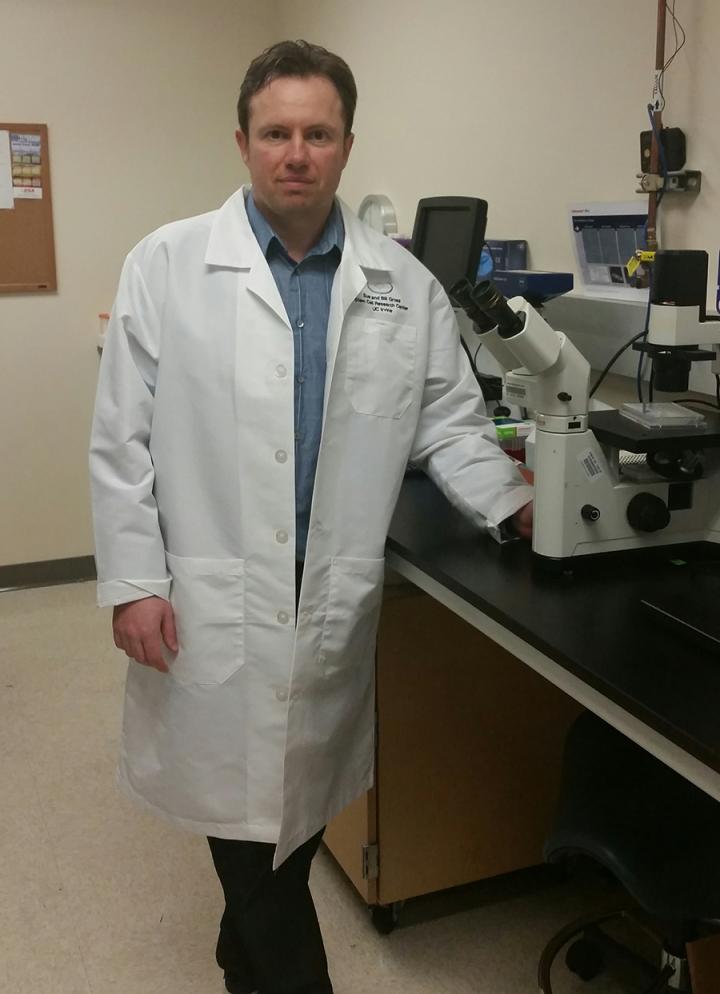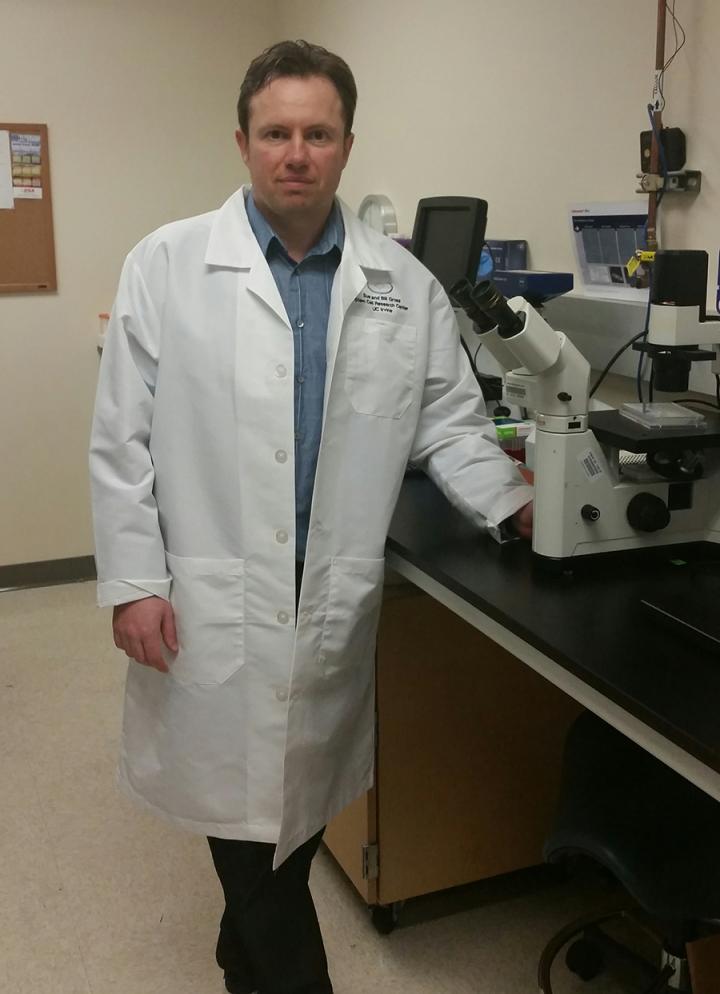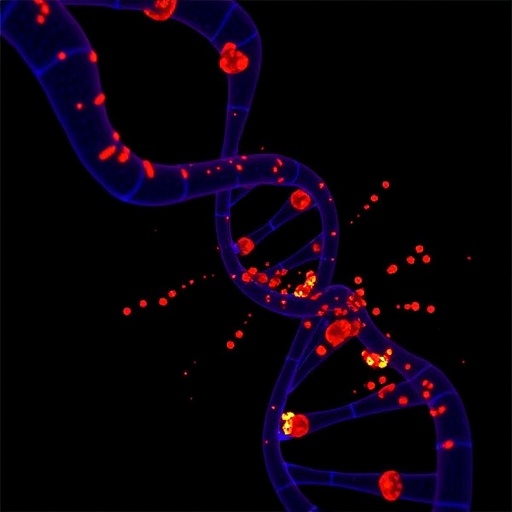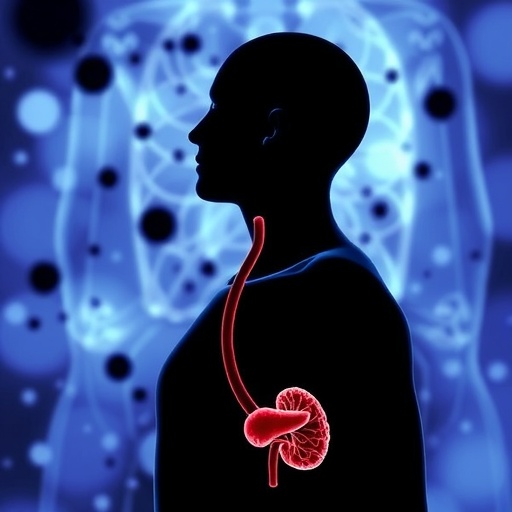
Irvine, Calif., Aug. 1, 2016 — Using new and innovative immune-therapeutic approaches to silence “don’t eat me” signaling proteins recognized by specialized cells of the immune system, University of California, Irvine molecular biologists and their colleagues have identified an effective way to combat metastatic melanoma.
Led by Alexander D. Boiko, UCI assistant professor of molecular biology & biochemistry at the Ayala School of Biological Sciences and the Sue and Bill Gross Stem Cell Center, the researchers discovered that blocking the cell surface protein, CD47 (known as a “don’t eat me” signal), on melanoma cells, increased the degree by which these cells were phagocytosed, or “eaten,” by macrophages. The team further discovered that blocking CD47 in combination with targeting a second cell surface protein, CD271, previously found to be expressed on melanoma initiating cells, resulted in virtually complete inhibition of metastases arising from human melanoma tumors transplanted in mice. The full study appears Aug. 9 in Cell Reports. (Link to study: http://www.cell.com/cell-reports/fulltext/S2211-1247(16)30890-7)
The cell surface protein CD47 was found to be overexpressed by metastatic melanomas, which helps them avoid being eliminated by the organism’s immune system. CD271, on the other hand, had been previously shown by Boiko to mark a cell population in melanomas responsible for tumor initiation and metastatic spread of this aggressive cancer. For the current study, Boiko and his team conjectured that metastatic melanomas relied on the overexpression of both proteins to fool the immune system and spread to other areas of the body.
To test this hypothesis, Boiko and his colleagues used specific blocking antibodies against CD47 (to activate macrophage phagocytosis) and CD271 (to selectively target the most aggressive melanoma cell population). When mice bearing human metastatic melanomas were treated with this antibody regimen, researchers discovered that simultaneous application of antibodies against CD47 and CD271 resulted in near complete elimination of metastasis from all organs of experimental mice. Boiko’s group has further discovered that this therapeutic effect was mediated by profound alteration of the microenvironment surrounding the tumors, causing immune cells to fight cancer more effectively.
“Further research is needed to determine the full anti-metastatic properties of the dual CD47/CD271 antibody therapy and the safety of its application in human patients,” Boiko said. “However, combining this therapy with other emerging treatments that also modulate the immune system represents a new approach that may offer increased benefit against metastatic melanomas. These are very exciting times for the cancer immunotherapy field and we are aiming to add an important component to this type of treatment, which will hopefully translate into a more effective outcome for patients.”
###
Michael Ngo, Arum Han, Anita Lakatos and Stephanie Hachey from UCI; Debashis Sahoo from UC San Diego; Kipp Weiskopf and Irving Weissman from Stanford University; and Andrew Beck from the Beth Israel Deaconess Medical Center in Boston contributed to the study. The research was supported by the National Institutes of Health (grant R00 CA154960, F30 CA168059 and T32 GM007365), a Melanoma Research Alliance Young Investigator Award, the J.M. Nicolay Melanoma Foundation, the Virginia and D.K. Ludwig Fund for Cancer Research.
About the University of California, Irvine: Founded in 1965, UCI is the youngest member of the prestigious Association of American Universities. The campus has produced three Nobel laureates and is known for its academic achievement, premier research, innovation and anteater mascot. Led by Chancellor Howard Gillman, UCI has more than 30,000 students and offers 192 degree programs. It’s located in one of the world’s safest and most economically vibrant communities and is Orange County’s second-largest employer, contributing $5 billion annually to the local economy. For more on UCI, visit http://www.uci.edu.
Media access: Radio programs/stations may, for a fee, use an on-campus ISDN line to interview UCI faculty and experts, subject to availability and university approval. For more UCI news, visit news.uci.edu. Additional resources for journalists may be found at communications.uci.edu/for-journalists.
Media Contact
Rahasson Ager
[email protected]
949-824-6282
@UCIrvine
http://www.uci.edu
The post UCI scientists identify a new approach for treating skin cancer appeared first on Scienmag.






